
A Quick Note About Tooth Discoloration
Before we dive into some of the top causes of discoloration, we want to let you know that if you’re unhappy with the color of your teeth, you’re not alone. Smile whitening is one of the most popular dental treatments in the United States, and according to one study, over 56% of people wished their teeth were whiter. That’s probably why Americans spend over a billion dollars on tooth whitening treatments every year!
Common Causes of Tooth Discoloration
Perhaps the most common reason behind tooth discoloration is smoking or using smokeless tobacco. The tar, nicotine, and tobacco itself are all staining ingredients, and since using tobacco is addictive, these ingredients are being introduced into the mouth on a regular basis and often over the period of many years. The result is yellowed teeth or even brown teeth. Your dentist in Farmington Hills will usually need to use a combination of smile whitening treatments and cosmetic dentistry treatments to whiten teeth discolored by tobacco.
One of the causes of tooth discoloration that’s outside of our control (mostly) is tooth trauma. Trauma can occur from an automobile accident, a fall, or even a sporting accident. These types of accidents can cause a tooth or even several teeth to appear dark and gray. This is due to damage inside of the tooth. Tooth trauma should be checked by your dentist as soon as possible and monitored over time. While we can’t avoid all accidents, we can take steps to prevent tooth trauma when playing sports by wearing a fitted mouthguard.
What we eat and drink plays a large role in our oral health and in the color of our teeth. For example, things like coffee, tea, wine, berries, and tomato sauce can all cause tooth discoloration. But that’s not all. A diet that’s highly acidic will attack and wear down tooth enamel, causing teeth to appear more transparent, dull, gray, or yellow. A diet high in sugar can result in tooth decay and cause teeth to have brown spots or dark splotches.
Your dentist in Farmington Hills will tell you just how important it is to brush your teeth twice a day and floss once a day. After all, these oral hygiene habits help protect your teeth from cavities, gum disease, and other oral health problems. But did you know that brushing and flossing can also help keep your teeth white? It’s true. Those who don’t follow a good oral hygiene routine at home are more prone to yellowish or gray teeth and may even experience orange or green spots throughout their grins.
When it comes to keeping your teeth bright and white, make sure to brush and floss regularly, avoid using tobacco, and enjoy staining foods and drinks in moderation. Don’t forget, it’s also crucial that you see your dentist every six months for regular checkups and professional cleanings. These appointments go a long way in keeping your smile both healthy and white.
Accepting new patients at all of our dental offices in Canton, Farmington Hills, and Livonia.

The sun is a pretty powerful thing — it helps us grow food, it keeps us warm, and it prevents the planet from turning into a giant ice ball. But the sun’s benefits run even deeper. In fact, we have the sun to thank for helping our bodies stay happy and healthy thanks to a little thing called vitamin D. Vitamin D is an essential vitamin that helps our overall and oral health in so many ways, such as:
The best way to get vitamin D is through some good old fashioned sunshine. But as we all know, too much sun can have negative effects, such as a painful sunburn and an increased risk for skin cancer. Enjoy sunlight in moderation and know your limits. Most researchers agree that anywhere between 5 and 30 minutes of sunshine a day is all it takes to get enough vitamin D.
Getting enough vitamin D can be difficult, especially during winter months or over several days of dreary, rainy weather. When the sun isn’t an option, you can get your vitamin D by choosing foods that contain it. Some foods that are good sources of vitamin D are:
Knowing all of the benefits associated with sunshine and vitamin D, trust your dentist in Canton when they say to get outside, enjoy the weather, and soak up some rays. Just make sure you limit your exposure to direct sunlight and wear sunscreen if you’ll be outside for an extended period of time.
Accepting new patients at all of our dental offices in Canton, Farmington Hills, and Livonia.
Did you know that 56% of young adults ages 18-34 drink about 2.6 glasses of soda per day? Not only that, but when the Gallup poll was expanded, they found that as many as 48% of all American adults consume that much soda daily. Since soda is only one type of soft drink, this doesn’t even count the number of individuals who regularly consume other soft drinks such as fruit juices and sports drinks.
While soft drinks can be delicious and refreshing, they can also have some unfortunate side effects. In terms of your overall health, they can cause obesity, type-2 diabetes, and various other medical conditions. In terms of your oral health, they can cause the following:
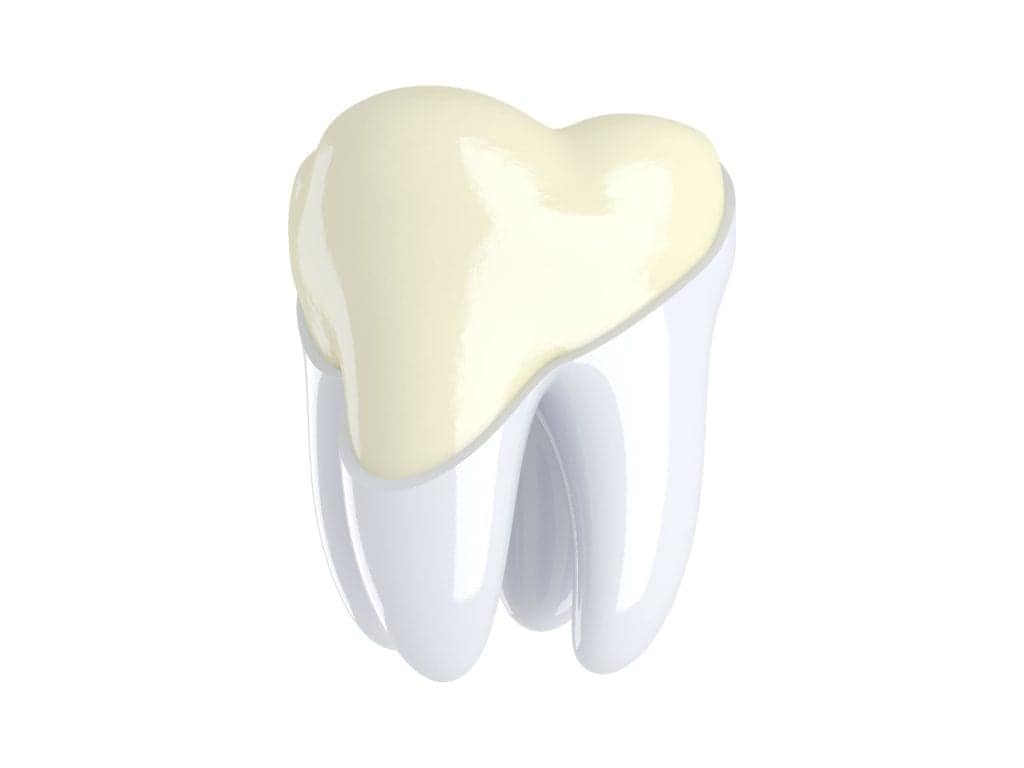
Many soft drinks, soda especially, contain citric, phosphoric, or tartaric acid. These acids begin to erode your enamel as soon as they are in your mouth and the effect lasts for about 20-30 minutes after you have finished drinking. In a study completed by the University of Michigan, as little as two weeks of daily soda drinking was found to erode about 3 mg/cm2 of tooth enamel. While soda is the main culprit, fruit juices and sports drinks can also cause enamel erosion. Unfortunately, even sugar-free soft drinks have the same erosive effect. For more information, see our article “What is Dental Erosion?”
Many soft drinks also contain varying levels of sugar. While this makes them taste good, excessive sugar intake is detrimental to your oral health because decay-causing bacteria feed off of sugar. First and foremost, this allows them to deposit an acidic waste product directly onto your teeth. Additionally, feeding the bacterial population causes them to reproduce and increase their numbers. Ultimately, this means more acid attacks.
When you combine the damaging effects of enamel erosion with increased bacterial populations, tooth decay becomes almost guaranteed. However, there are a few things you can do to reduce this risk. If you must have soft drinks, try these tips:
The best way to reduce the risk of tooth decay from soft drinks is to reduce the amount of soft drinks you consume. Ultimately, the less soft drinks you consume, the better. Instead, try drinking more water and milk.

Another way to reduce the risk of tooth decay from soft drinks is to minimize the amount of exposure between your teeth and your soft drink of choice. Two ways to do this are to drink from a straw and to drink quickly. This reduces the amount of contact your teeth have with the sugars and acids, as well as the amount of exposure time.
Once you have finished your soft drink, you can minimize the damage from both acid and sugar by drinking a chaser of water or milk. This helps to rinse off excess acid and sugar, as well as balance the pH in your saliva.
With an increased risk of tooth decay, it is more important than ever to stay caught up on your dental exams and cleanings. While it is recommended to see your dentist every six months, they may recommend additional appointments depending on the condition of your teeth.
Overall, soft drinks are considered to be detrimental to your oral health. Not only do they have no nutritional value, but they are loaded with acids and sugars. These acids and sugars can cause your teeth to become eroded and/or decayed over time. To protect your teeth from the risks associated with soft drinks, it is important to follow the above tips and to regularly visit your local dental office.

Dr. Dennis Laurich has been practicing dentistry for over 40 years. He received his DDS degree from the University of Michigan Dental School and regularly attends oral health care conventions to continue his dental education. This allows him to treat patients with the leading dental technology and methodologies. Additionally, he is a member of the American Dental Association, Michigan Dental Association, and the Detroit District Dental Society.
While tooth decay and gum disease are two of the biggest threats to your oral health, there is another threat that you may or may not be aware of. However, unlike tooth decay or gum disease, this threat is not caused by bacteria in the mouth. Nevertheless, it can still be detrimental to your overall dental health and should be taken seriously. This threat is known as dental erosion and in order to understand its impact on your teeth, we must first divulge into the basics of tooth enamel.
Tooth enamel is the strongest substance in the human body and is composed of 96% minerals, specifically calcium and phosphorus. The molecules of these minerals are arranged in such a way that they are scientifically known as crystalline calcium phosphate, or hydroxyapatite. While being composed primarily of minerals allows tooth enamel to protect the interior dentin and pulp layers of the teeth, its mineral composition also means that it can demineralize.
The most common cause of demineralization is tooth decay, in which bacteria produce lactic acid that wears away the enamel. The early stages of demineralization often do not produce noticeable symptoms, however as the process continues individuals may notice tooth sensitivity, discoloration, or indents on the tooth’s surface.
Unfortunately, tooth decay is not the only thing to be concerned about. Dental erosion is the breakdown of enamel caused by reasons other than bacteria and is also cause for concern. Despite the fact that it is not caused by bacteria, dental erosion has the same symptoms of tooth decay with the addition of teeth that damage easily. Since dental erosion is not caused by bacteria, you are probably wondering what causes it. Here are a few causes of dental erosion:
As you are probably aware, the foods and beverages we consume on a daily basis can strongly impact our overall and oral health. Acidic foods and beverages, in general, can cause your tooth enamel to erode over time. This is because these acidic foods and beverages increase the mouth’s acid concentration and acids are known for eroding surfaces. While you don’t necessarily need to avoid acidic foods altogether, it is important to manage quantity control when consuming rhubarb, berries, apples, citrus, fruit juices, or sodas with citric or phosphoric acid.
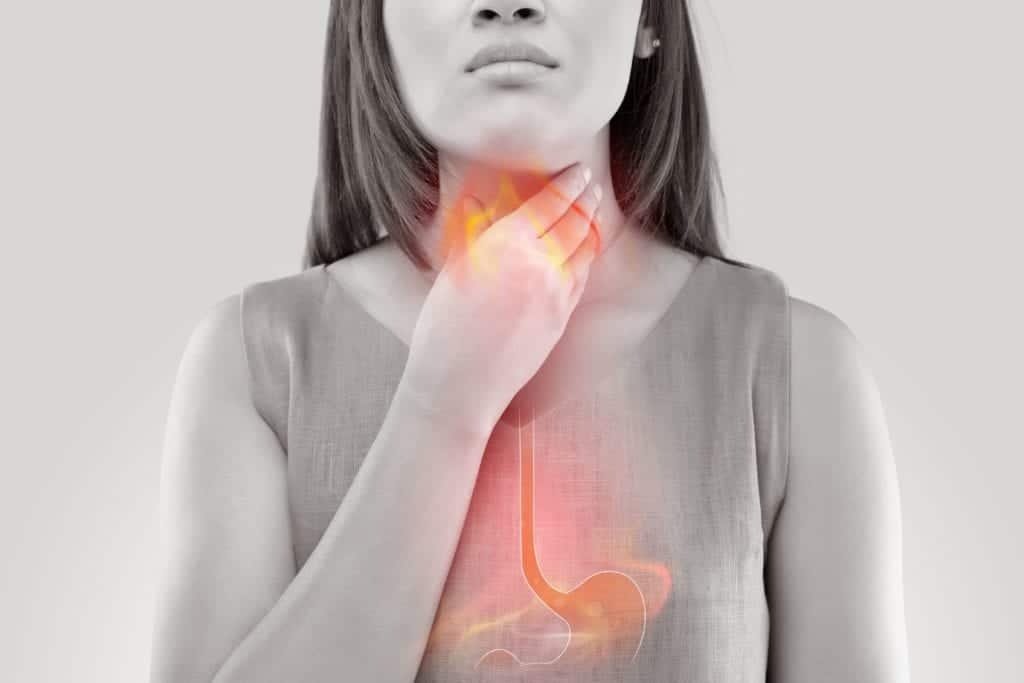
Not only is acid present in the various foods and beverages we consume, but it is also an integral part of our digestive system. However, stomach acid is only beneficial when it remains in the stomach. If it reaches the mouth through vomiting or from acid reflux conditions, it also increases the mouth’s acid concentration. Therefore, people who have medical conditions that cause frequent vomiting or acid reflux are at a higher risk of developing enamel erosion.
Your mouth regulates acid concentration through your saliva, so a decreased amount of saliva can mean an increased concentration of acid. Dry mouth can occur as a result of various medical conditions or as a side effect to certain medications.
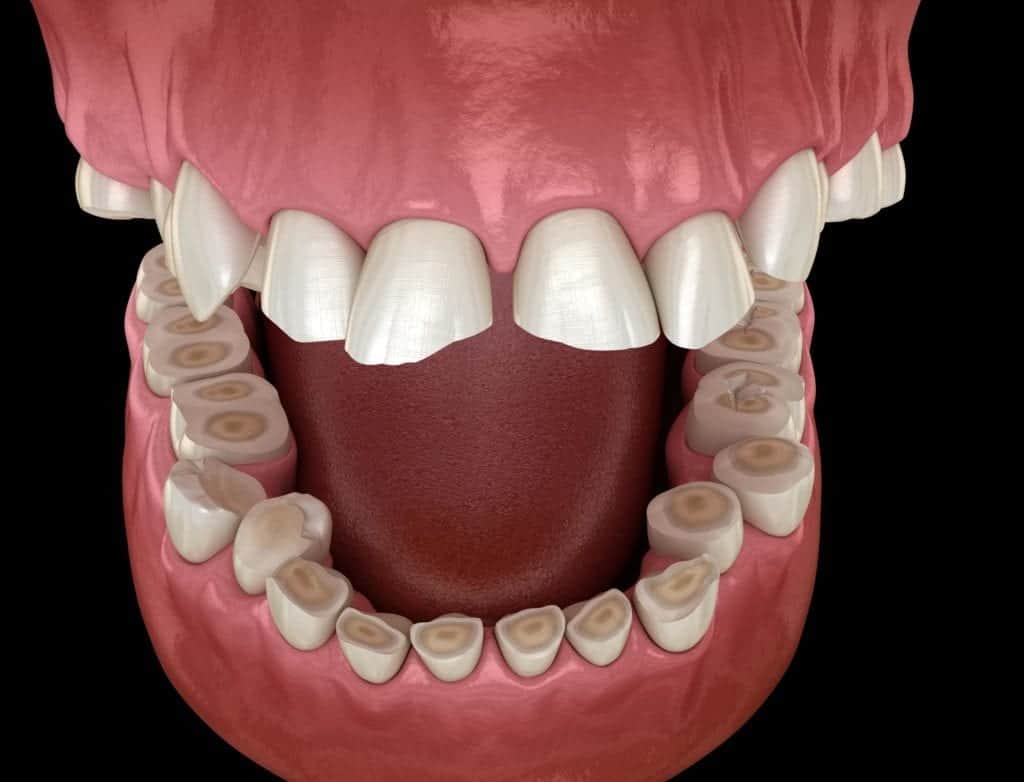
Collectively, teeth grinding and clenching are known as bruxism. Bruxism is the only cause of dental erosion that does not deal directly with acid. Instead, bruxism places excess strain on the enamel that causes it to wear down faster. Unfortunately, this also makes the enamel more susceptible to further erosion caused by acid.
As you can see, dental erosion is another common threat to your teeth that can lead to similar symptoms and problems associated with tooth decay. Various factors such as acidic foods, stomach acid, dry mouth, and bruxism are all common causes of dental erosion. Over time, these factors will continue to wear down your enamel and weaken your teeth. As a result of dental erosion, your teeth are more likely to become decayed or damaged. Therefore, regular dental checkups can allow your dentist to help you prevent or minimize dental erosion before it is too late.

Dr. Dennis Laurich has been practicing dentistry for over 40 years. He received his DDS degree from the University of Michigan Dental School and regularly attends oral health care conventions to continue his dental education. This allows him to treat patients with the leading dental technology and methodologies. Additionally, he is a member of the American Dental Association, Michigan Dental Association, and the Detroit District Dental Society.
Did you know that March 6th is National Dentist’s Day? Every year during the first week of March, this special day is set aside to celebrate our oral health heroes. General dentists and dental specialists all work hard throughout the year to maintain or restore the oral health of their patients. While this may sound simple enough, this is no easy task and many people are unaware of just how many things their dentist does on a regular basis. Since today is National Dentist’s Day, we thought that it would be an appropriate time to shed some light on the various things your dentist does every day:
Of course, your dentist examines teeth, but do you know exactly what they look for while examining them? When your dentist looks at your teeth, one thing they are looking for is decayed tissue. While some tooth decay can be simply seen, they may also use a tool to feel around the surface of the tooth for any small cavities. As they check each tooth for signs of decay, they will also look for any signs of damage or enamel wear. In some cases, these things can indicate that the patient grinds or clenches their teeth.
Your dentist will also examine your gums for signs of gum disease. Symptoms such as red, tender, or swollen gums, as well as gums that bleed easily, are all possible indicators of gum disease. Another thing your dentist will do to diagnose gum disease is to measure the depth of your gum pockets. Based on the measurements, this tells your dentist if your gums are normal or if they are receding.

Oral cancer rates are on the rise, but it is highly treatable when detected in the early stages. As such, your dentist will do a brief oral cancer screening at each dental checkup. Oral cancer affects the tissues of the mouth, including the lips, tongue, gums, inner cheeks, hard and soft palates, uvula, and pharynx. Therefore, your dentist will examine these areas for any abnormalities that could warrant further testing. They may even use a special light that makes abnormal tissue glow.
While your dentist won’t necessarily be your new health coach, you can expect that they will ask you basic questions about your medical history, as well as any current medications or medical conditions. They do this because oral and overall health are closely related, therefore information about one can provide indirect information on another. Depending on your individual case, your dentist can provide you with valuable information to help manage your oral and overall health.
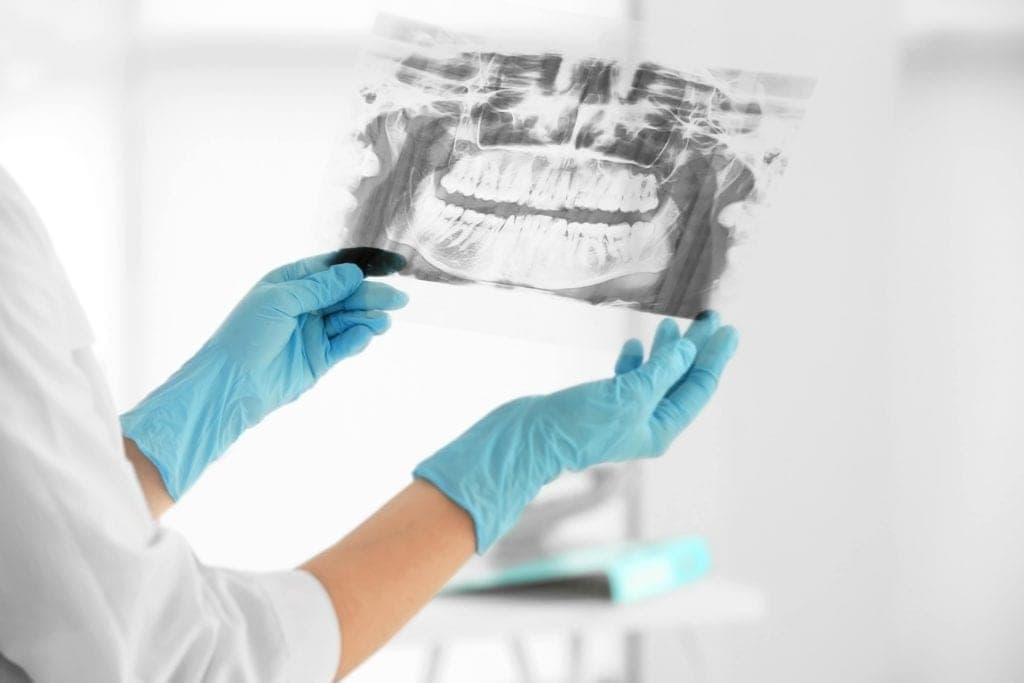
During your dental checkup, you are able to have dental x-rays taken and read in the same location during the same appointment. This is because your dentist can easily interpret the information on the x-rays and explain it to you. Dental x-rays are used by your dentist to monitor the health of your teeth and underlying jaw bone, as well as to diagnose dental issues that are not immediately visible. A few things that dental x-rays are commonly used to diagnose are impacted wisdom teeth, fractured teeth, cavities in between the teeth, or dental pulp infections.
As you can see, your dentist performs a wide range of tasks to help maintain your oral health. When you visit your dentist twice a year, this allows them to provide you with the best type of care to reduce your chances of developing serious dental issues. If you don’t have an upcoming appointment with your local dentist, schedule one today in honor of National Dentist Day.

Dr. Dennis Laurich has been practicing dentistry for over 40 years. He received his DDS degree from the University of Michigan Dental School and regularly attends oral health care conventions to continue his dental education. This allows him to treat patients with leading dental technology and methodologies. Additionally, he is a member of the American Dental Association, Michigan Dental Association, and the Detroit District Dental Society.
Some people may think that since the primary teeth are eventually lost and replaced with permanent teeth, that children don’t need dental care. However, this is not the case and dental care for children is actually very important. For starters, having dental care at a young age familiarizes your child with dental hygiene and helps them develop good habits that will stay with them as they get older.
Not only that, but it is important to keep primary teeth healthy so they are not prematurely lost. This is because the primary teeth actually play a few important roles. For starters, they allow children to learn how to chew and speak properly. They also keep each other in their correct places so that there is enough room for the permanent teeth to eventually erupt. When a primary tooth is prematurely lost, this can negatively impact a child’s ability to speak and eat properly. It can also cause the teeth to shift, which can cause complications when the permanent teeth start erupting.
For these reasons, you should take your child to a family dentist at least once every six months. During these visits, your child’s teeth and gums will be evaluated for early signs of potential problems. In order to prevent or treat dental issues, there are a few dental treatments that are used for kids, such as:
Just as adults need to have their teeth cleaned regularly, children also need regular dental cleanings. Teeth cleanings are preventative procedures that should be performed on both the primary and permanent teeth in order to remove excess plaque and decrease the risk of developing dental decay or gum disease. Since the American Dental Association recommends teeth cleaning twice a year, this is the most common dental treatment for kids.
Fluoride has been shown to strengthen the tooth enamel while also making it harder for bacteria to adhere to the tooth’s surface. As a result, fluoride treatments are another preventative treatment that can further decrease the risk of developing tooth decay or gum disease. In most cases, fluoride is applied topically to the teeth after a dental cleaning.
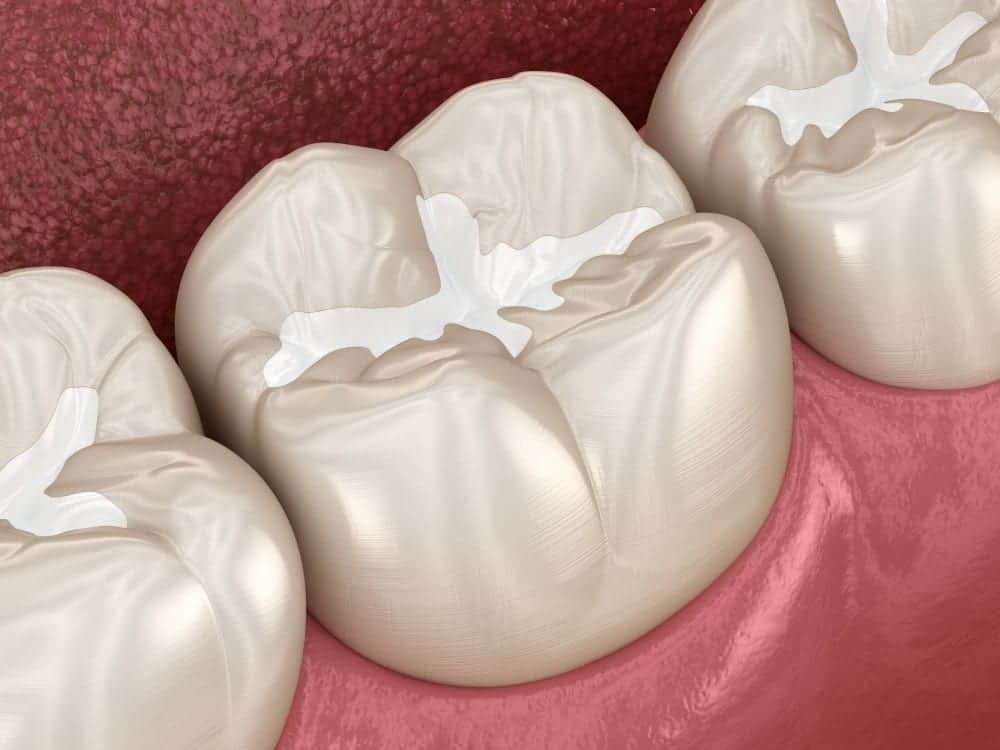
Younger children or those who struggle with maintaining an oral care routine may also have dental sealants applied to their teeth as an additional preventative measure. Sealants are ultra-thin coatings of tooth-colored composite resin that are brushed onto the chewing surface of molars. They help to prevent decay by acting as a barrier between bacteria and enamel. Sealants are often applied to the molars because their highly textured surface is one of the most common locations of dental cavities in children.
Dental fillings are a common restorative treatment used to restore teeth that have been affected by tooth decay. Once the decayed tissue has been removed, the remaining cavity will be cleaned and filled. There are different dental materials that may be used, but the two most common are silver amalgam and composite resin.
In order to take care of your child’s teeth and maintain their oral health, your family dentist may use one or more of these dental treatments for kids. Teeth cleanings and fluoride treatments are standard preventative treatments for all kids, however dental sealants may or may not be needed for your child. Additionally, dental fillings are a restorative treatment that is only needed if a dental cavity has formed.

Dr. Dennis Laurich has been practicing dentistry for over 40 years. He received his DDS degree from the University of Michigan Dental School and regularly attends oral health care conventions to continue his dental education. This allows him to treat patients with leading dental technology and methodologies. Additionally, he is a member of the American Dental Association, Michigan Dental Association, and the Detroit District Dental Society.
Many people will visit their doctor’s office for a yearly physical and some may even try to eat more vegetables or exercise more to improve their overall health. Yet, it is estimated that only about 33% of Americans floss daily. This suggests that most people would view their oral health as being less important than their overall health. In some cases, people may even believe that they don’t need to take care of their teeth because there are numerous restorations available to replace decayed, damaged, or missing teeth.
As any dentist will tell you, your oral health is just as important as your overall health. In fact, your oral health can even impact your overall health. This means that having poor oral health can lead to the development of problems elsewhere in the body while having good oral health can help manage medical conditions more effectively. So, how exactly do the things happening in your mouth affect the rest of your body? Let’s take a closer look at how your oral health affects your overall health.
When it comes to dental health problems, the two most common are tooth decay and gum disease. This makes sense when you consider that your mouth is primarily composed of teeth and gums. At the microscopic level, however, your mouth also contains thousands of natural bacteria that help protect your body from external germs that enter through the mouth.
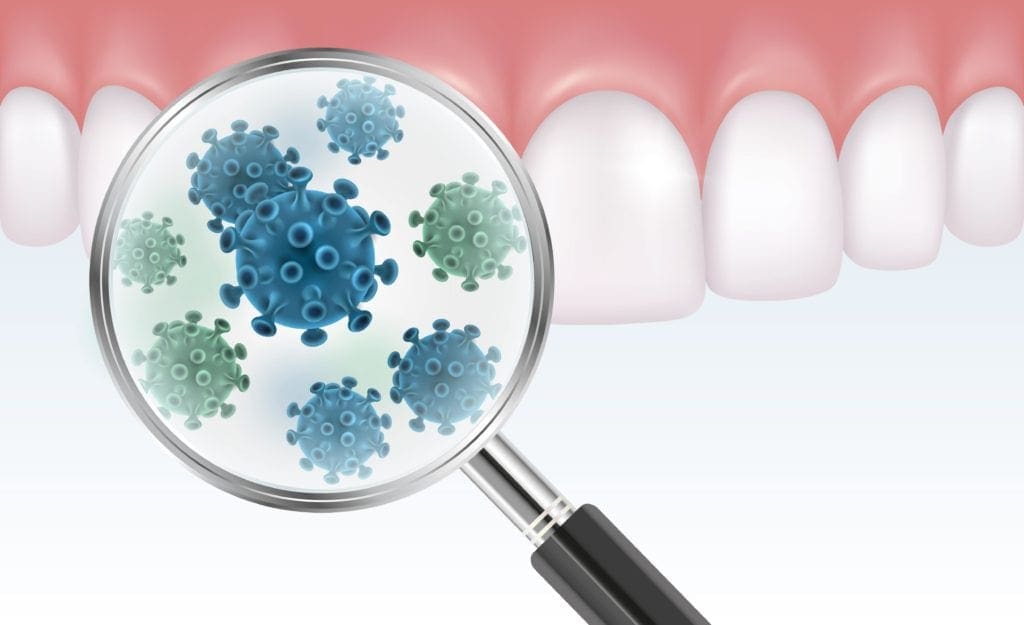
However, when these bacteria populations are not controlled, they are detrimental to your oral health. The majority of bacteria reside in dental plaque, which is a clear film on the surface of your teeth that collects food debris. Dental plaque can be removed by brushing and flossing, however, if an area is commonly missed, the plaque and bacteria will remain.
Bacteria produce an acidic waste product that is capable of eroding tooth enamel. When excessive amounts of bacteria collect in a single place, they deposit a concentrated form of this acid to one location. This eventually leads to tooth decay or the formation of a dental cavity.
Not only that, but bacteria that accumulate in dental plaque along the gum line will infect the gum tissue. This leads to gum disease and generally results in red, swollen, inflamed, and/or tender gums that bleed easily.
Now that we’ve covered the role of bacteria in the mouth and how excessive amounts of it can cause tooth decay and gum disease, let’s take a look at just how this affects the rest of your body. For starters, the mouth is affected by diseases the same way any part of the body is. That is, it becomes weaker and unable to fight the infection over time.
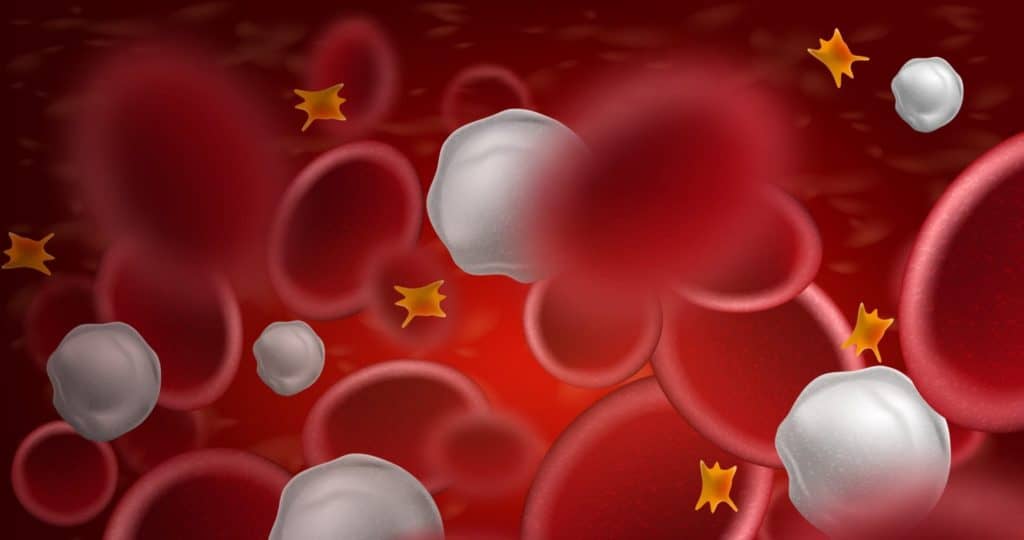
Therefore when bacterial populations continue to increase, the infection will continue to spread. Since the mouth is compromised, bacteria are able to enter the bloodstream. This is something that normally doesn’t happen but can happen with large bacterial populations. Once in the bloodstream, the bacteria can travel to any location in the body. However, it can cause more than tooth decay and gum disease.
Depending on the location the bacteria travels to in the body, it can cause the following medical conditions:

Additionally, gum disease has also been closely linked to diabetes, and can be an indication of poor diabetes management. Conversely, diabetes can also cause gum disease.
In the end, your oral health affects your overall health more than you realize. Although many people think the worst thing that can happen from not visiting the dentist is a missing tooth or two, there are far more serious consequences that can arise from neglecting your oral health. Luckily, by brushing twice a day, flossing daily, and having your teeth cleaned every six months, you can decrease the risk of developing tooth decay and gum disease, as well as the possible medical conditions they can cause.

Dr. Dennis Laurich has been practicing dentistry for over 40 years. He received his DDS degree from the University of Michigan Dental School and regularly attends oral health care conventions to continue his dental education. This allows him to treat patients with leading dental technology and methodologies. Additionally, he is a member of the American Dental Association, Michigan Dental Association, and the Detroit District Dental Society.
Nowadays, it is truly amazing to consider the things that modern dentistry can do. Not only can missing teeth be replaced, but they can now be replaced in a way that closely replicates natural teeth. This is all thanks to the introduction of dental implants, which act as artificial tooth roots that support a dental prosthesis. In this way, dental implants restore not only the aesthetics of one’s smile, but the greatest amount of function as well.
Because of their numerous benefits, many people who have missing teeth opt to have dental implants placed as their restoration of choice. Unfortunately, however, not everyone can be a candidate for dental implants. This is because dental implants require a certain amount of bone mass in order for the implant to be successful. Without adequate bone mass, the implant will not heal properly and can cause a number of problems.
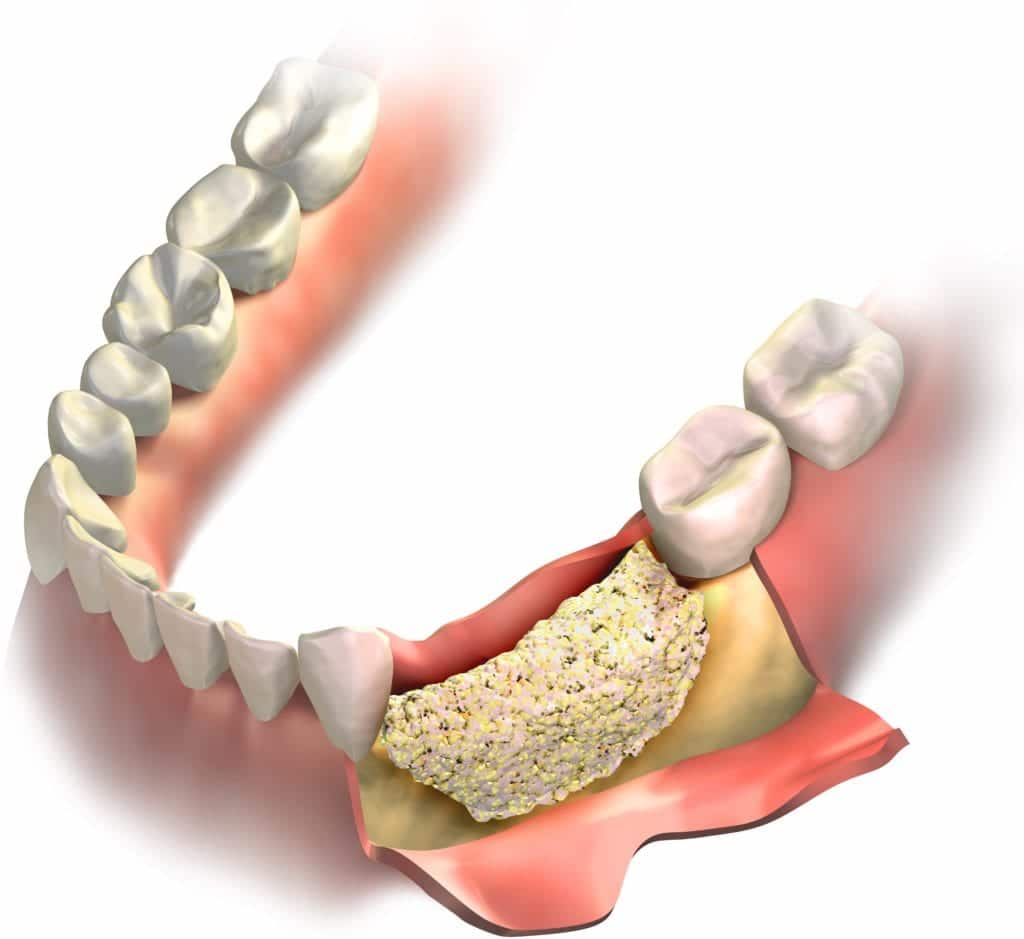
For this reason, your dentist may recommend having a bone graft prior to having your dental implants placed. Some dentists may even perform bone grafts while they place the implants. A bone graft is a surgical procedure that places bone material into an area with low bone mass. This bone material contains osteoblasts, which help the body to produce more bone in that area. About 3-6 months after the bone grafting procedure, the bone mass in this area will become denser.
When people are considering dental implants, one common question usually pertains to whether or not they will need a bone graft. Ultimately, only your implant dentist can answer that question with certainty. However, the simple answer to that question is that you will need a bone graft if your jawbones have undergone resorption and have decreased bone mass.
Bone resorption is the body’s response to a missing tooth. In order for the jawbones to maintain their bone mass, they need stimulation from the forces of chewing. When a tooth goes missing, its root can no longer stimulate that area of the jawbone. This ultimately causes the body to absorb the bone material from the jaw so that it can be deposited elsewhere.
This process generally starts about six months after a tooth has gone missing, which is why most dentists recommend replacing a missing tooth as soon as possible. The process will then continue, and the bone will slowly deteriorate over time. Depending on the number of missing teeth, bone resorption can actually change your facial structure. This is why people with dentures eventually need to have their dentures replaced.
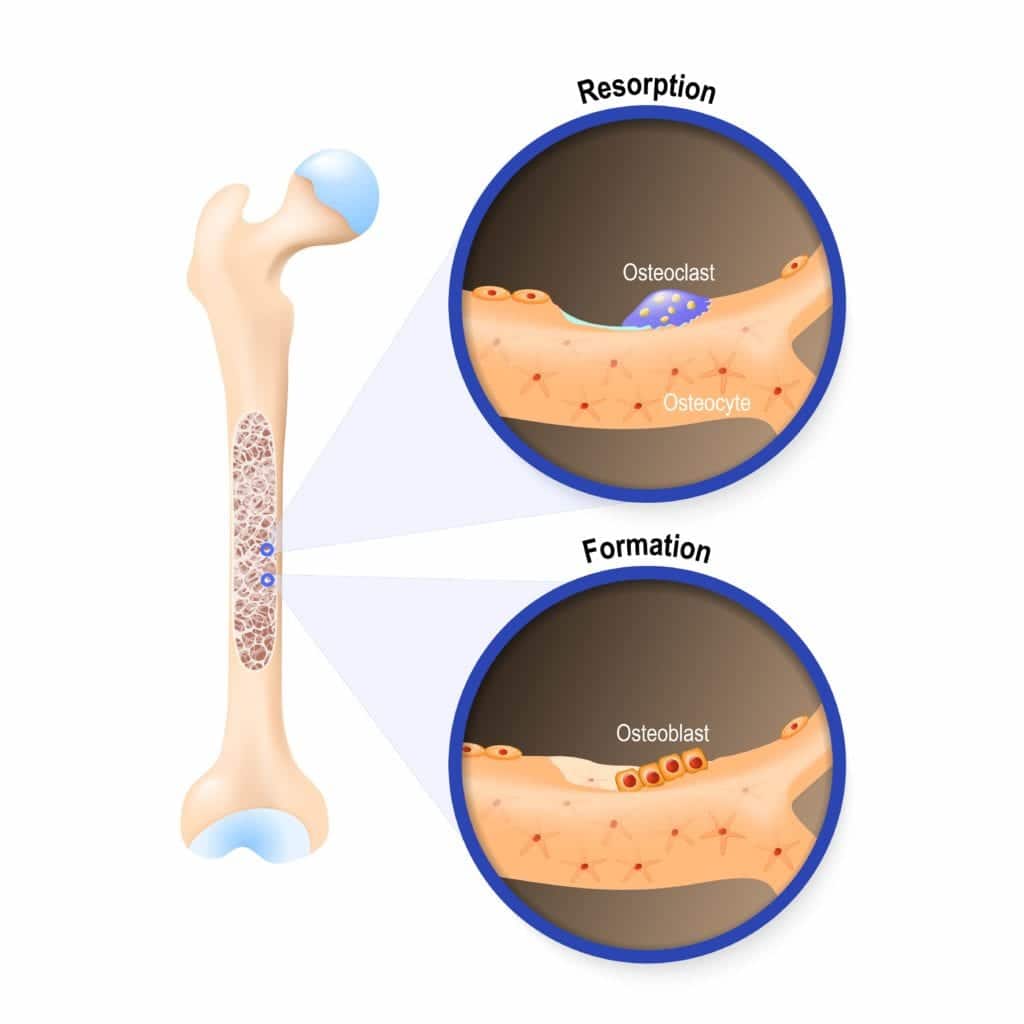
With that being said, you are less likely to need a bone graft if you have a tooth replaced immediately after you lose it, or at least before the first six months is up. Conversely, this means that if you have had a missing tooth for a year or longer, you may need a bone graft. The number and location of the missing teeth may also play a role in whether or not you need a bone graft.
In order to determine if a bone graft is needed, your implant dentist will take dental x-rays and possibly a CBCT scan. They will then evaluate the underlying bone to determine if enough is present to safely place an implant. Depending on what they find, they may recommend a bone graft before implant surgery, a bone graft with implant surgery, or another restoration method altogether.
Overall, bone grafts allow people with inadequate bone mass to be able to have dental implants placed. By placing bone material that promotes the growth of new bone, they help build up the bone mass that has been depleted from missing teeth. Nevertheless, only an implant dentist can determine if a bone graft is needed or if dental implants are the best restoration method for your dental needs. Therefore it is best to schedule a consultation to determine if you need a bone graft.

Dr. Dennis Laurich has been practicing dentistry for over 40 years. He received his DDS degree from the University of Michigan Dental School and regularly attends oral health care conventions to continue his dental education. This allows him to treat patients with leading dental technology and methodologies. Additionally, he is a member of the American Dental Association, Michigan Dental Association, and the Detroit District Dental Society.
Are you not happy with the look of your smile? Do you find yourself smiling less or trying to conceal your mouth when you laugh? Does the thought of visiting a dentist for cosmetic dental treatments cause you anxiety that exceeds your dislike of your smile? If you answered yes to any of these questions, then chances are you’ve never heard of composite bonding.
Composite bonding, also known as dental bonding or cosmetic bonding, is a minimally-invasive cosmetic dental procedure that can easily and quickly improve the overall look of your smile. Depending on your smile’s condition and treatment goals, composite bonding can correct a variety of concerns during a single dental appointment, saving you time and money.
Composite bonding works by applying dental composite resin to the surface of the tooth. Although it is soft and malleable when applied, it is then shaped and hardened with a curing light. As it hardens, it also adheres itself to the enamel. Since composite is added to the tooth, it preserves the natural tooth structure and minimizes the need for a dental drill.
With that being said, let’s take a look at the various cosmetic concerns that composite bonding can fix:
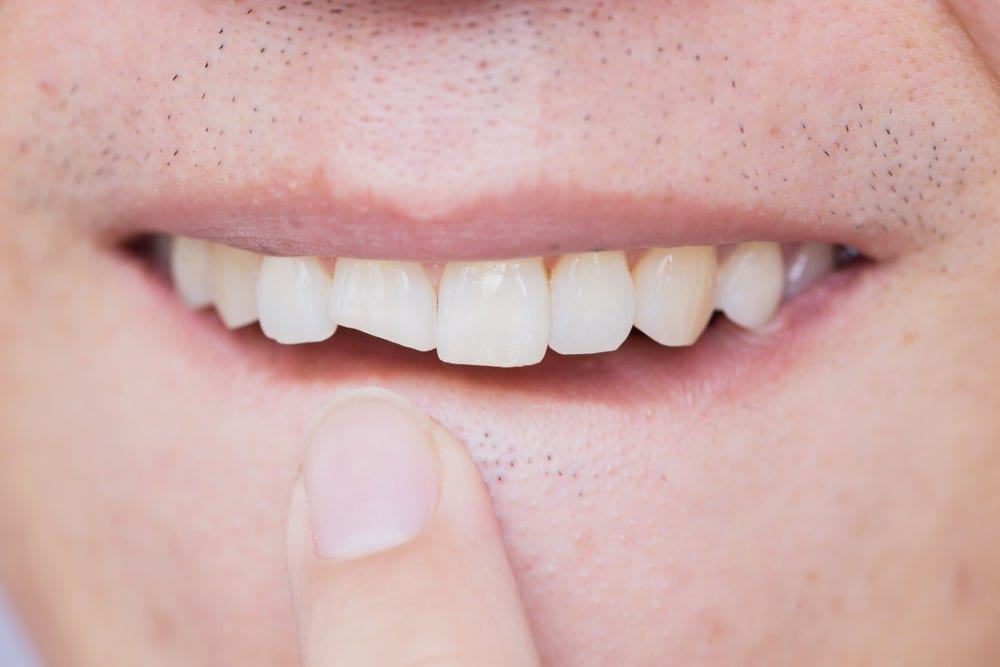
One common use for composite bonding is to fix minor tooth damage. Chips, cracks, or fractures in the enamel layer can easily be remedied by applying composite resin. Many dentists will recommend composite bonding to restore damaged teeth because it is less invasive than other dental procedures like veneers or crowns. However, there are still some cases that can better be treated with another procedure, depending on the extent of the damage.
Unfortunately, teeth can sometimes become discolored to the point where whitening treatments are ineffective. Discolorations can occur as the result of genetics, certain medications, age, or trauma to a specific tooth. Composite resin can be customized in terms of color, so applying a thin layer over a discolored tooth can instantly brighten its color.
In some cases, teeth can be oddly or unevenly shaped and sized. In these cases, composite resin may be applied to one or more teeth to create a more even smile. For example, certain teeth may be made slightly bigger to blend with surrounding teeth, while others may have resin added to a certain area to even out their shape. The end result is a smile that looks more proportionate in terms of shape and size.

Another common use for composite bonding is to close gaps between the teeth. While veneers or orthodontics can also achieve this, composite bonding is much more affordable and takes far less time. Composite resin may be applied to a single tooth or two teeth in order to make them slightly bigger to close the gap.
Overall, composite bonding is an easy and effective cosmetic dental treatment that can fix a number of concerns such as damaged teeth, discolorations, gaps, and odd-looking teeth. It also preserves the maximum amount of natural tooth structure, minimizes the need for dental drills, and can generally be completed in a single dental appointment. This will save you time and money, as well as make your overall experience more pleasant. With composite bonding, you can have the smile you’ve always dreamed about.

Dr. Dennis Laurich has been practicing dentistry for over 40 years. He received his DDS degree from the University of Michigan Dental School and regularly attends oral health care conventions to continue his dental education. This allows him to treat patients with leading dental technology and methodologies. Additionally, he is a member of the American Dental Association, Michigan Dental Association, and the Detroit District Dental Society.
Nowadays, more and more dentists are recommending dental implants as the ideal choice for replacing one or more missing teeth. For those of you who may not know, dental implants are artificial tooth roots that are placed into the jawbone. They are made from titanium and are designed to eventually fuse with the surrounding bone structure to act as an anchor for a dental prosthetic such as a crown, bridge, or denture.
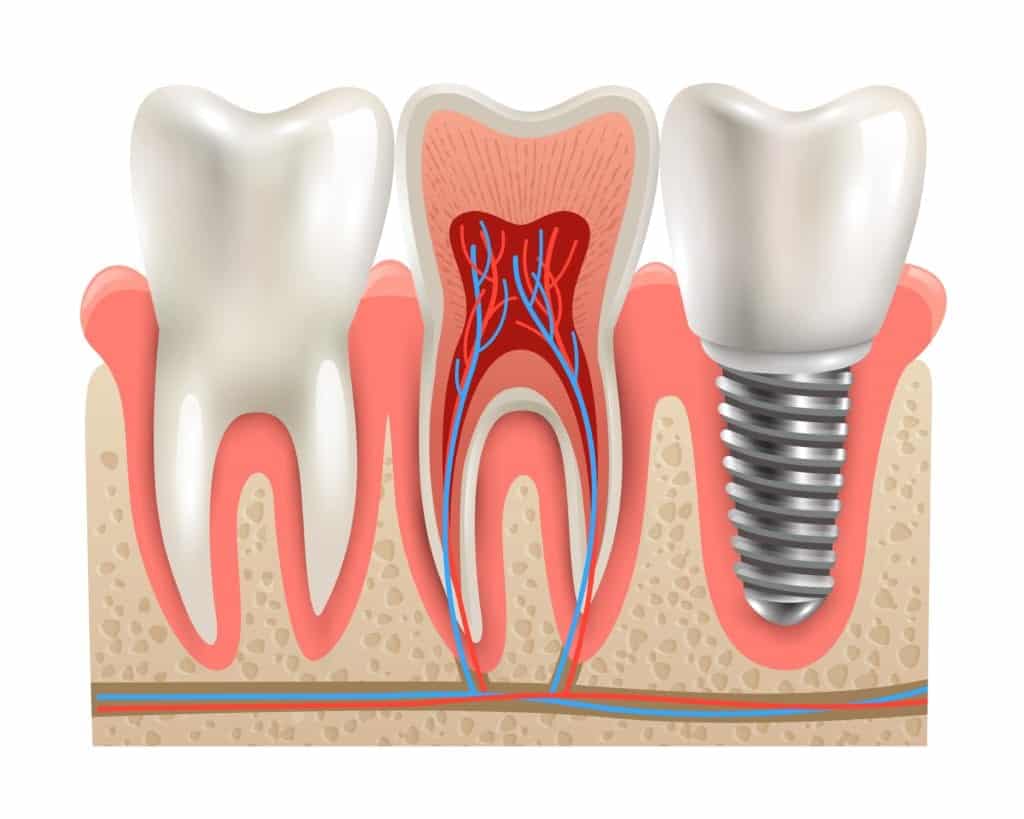
Since dental implants are “implanted” into the jawbone, however, they do require a minor oral surgery in order to be placed. In some cases, they may also require additional procedures such as a bone graft or sinus lift in order to ensure there is enough bone mass for the implant to fuse with. After they are placed, it will take an average of three to six months for them to fuse with the surrounding bone. During this time, patient compliance is of the utmost importance to make sure they heal properly.
With all these stipulations, some people start to wonder if dental implants last long enough to make the implant placement procedure worth it. While deciding if dental implants are worth it for you is up to you and your implant dentist, it can be said that implants are worth it in terms of how long they last.
On average, dental implants can last around 20 years, but this number is steadily growing as certain implants have been found to last even longer. In most cases, once an implant heals properly, it will last several years if properly cared for. Because of this, dental implants are rarely removed, except if the implant fails.
If a dental implant is going to fail, this usually happens during the three to six months when the implant is fusing with the bone. This period is known as osseointegration and it is an essential process that must occur to stabilize the implant. However, dental implants have a 98% success rate, so it is rare that the implant will fail.
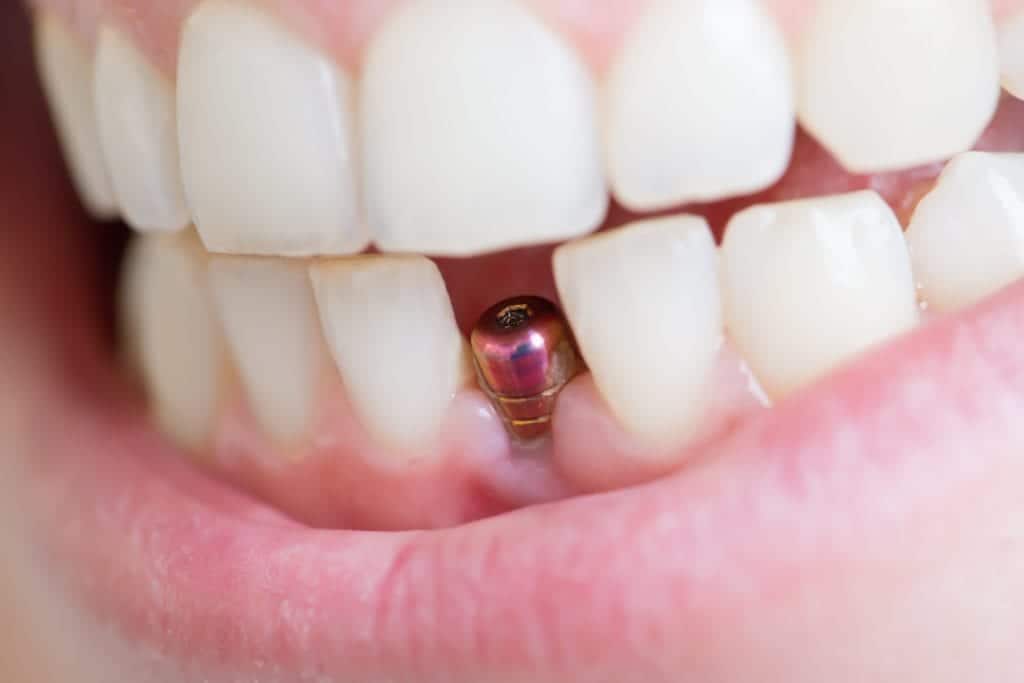
Although dental implants last about 20+ years, it is important to note that the prosthetic attached to them will most likely not last as long as the implant itself. The average lifespan for crowns, bridges, and dentures is about 10-15 years. Therefore it is very likely that the prosthetic will wear out and need to be replaced while the implant remains intact. However since the implant is already in place, you will not need to undergo the entire dental implant procedure a second time. Rather, your dentist will have a new restoration fabricated that will then be attached to the dental implant.
To keep your dental implant in good shape for years to come, it is important to maintain your oral health. Even though dental implants help to support a fake tooth, they still need to be cared for like real teeth. This means brushing twice a day, flossing once a day, and visiting your local dental office for a checkup and teeth cleaning every six months. This will reduce the risk of tooth decay and gum disease and increase the lifespan of your dental implant.
Overall, dental implants are extremely long-lasting. With an average lifespan of 20+ years, they are currently the longest-lasting restoration method available for replacing missing teeth. However, their long lifespan is dependent upon patient compliance immediately following the procedure, a successful osseointegration process, and continued oral hygiene care in the years following placement.

Dr. Dennis Laurich has been practicing dentistry for over 40 years. He received his DDS degree from the University of Michigan Dental School and regularly attends oral health care conventions to continue his dental education. This allows him to treat patients with leading dental technology and methodologies. Additionally, he is a member of the American Dental Association, Michigan Dental Association, and the Detroit District Dental Society.